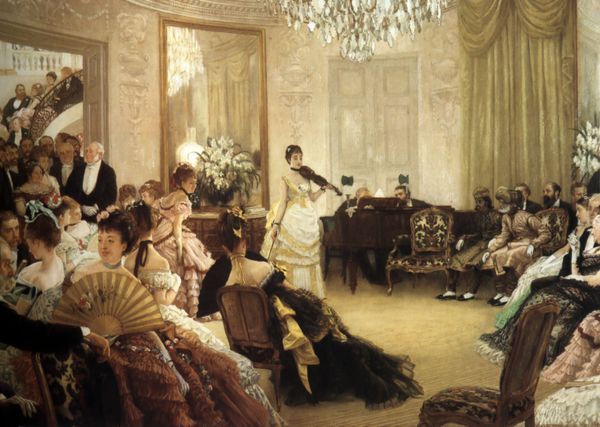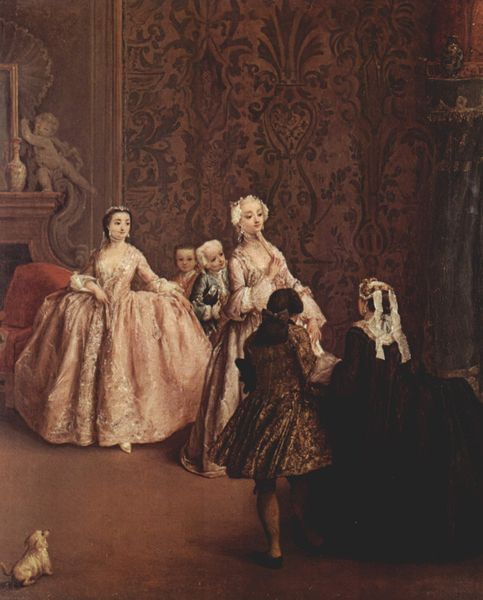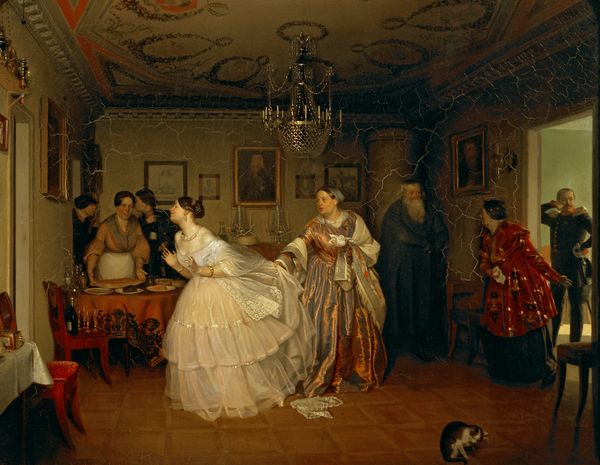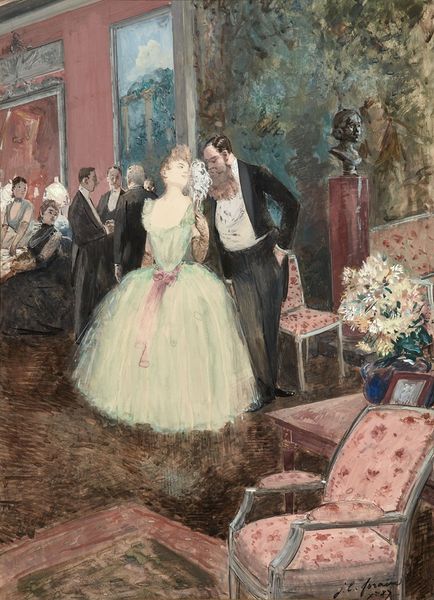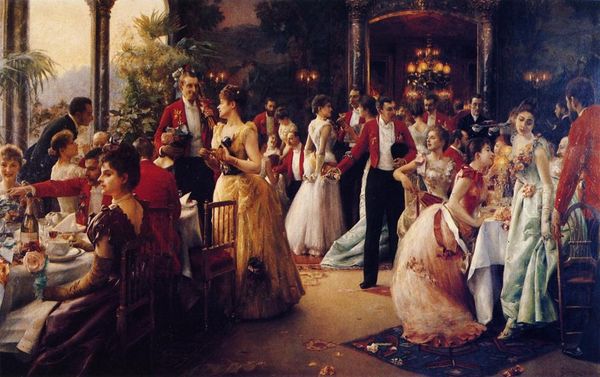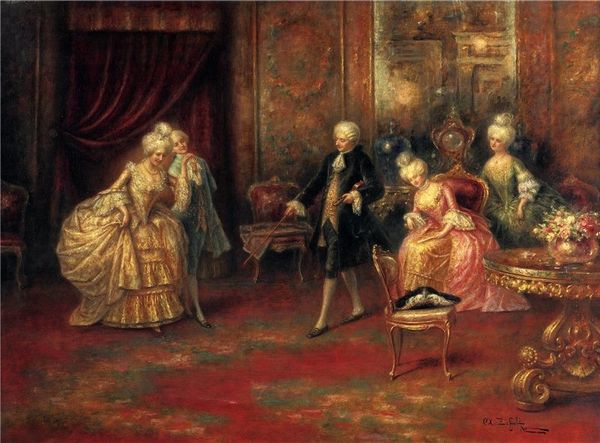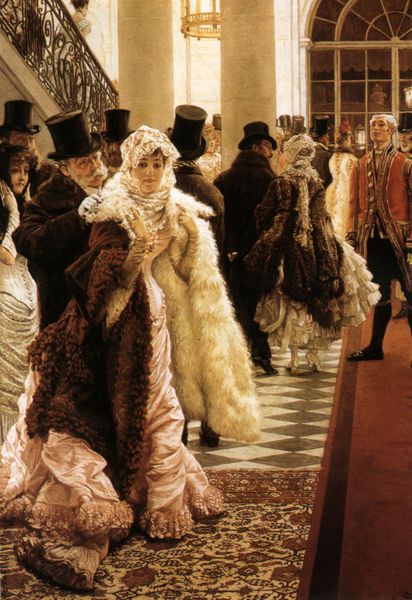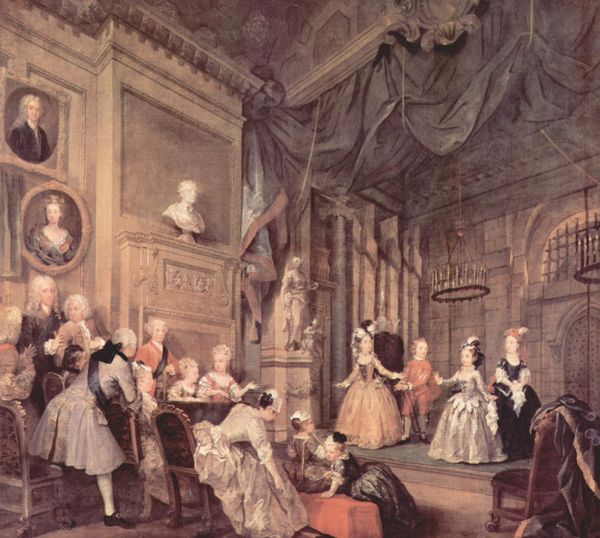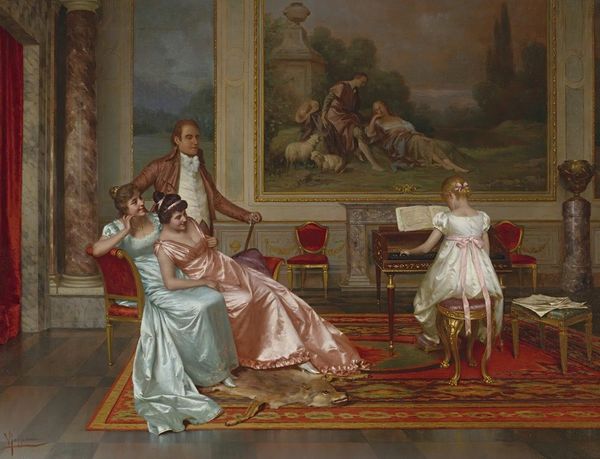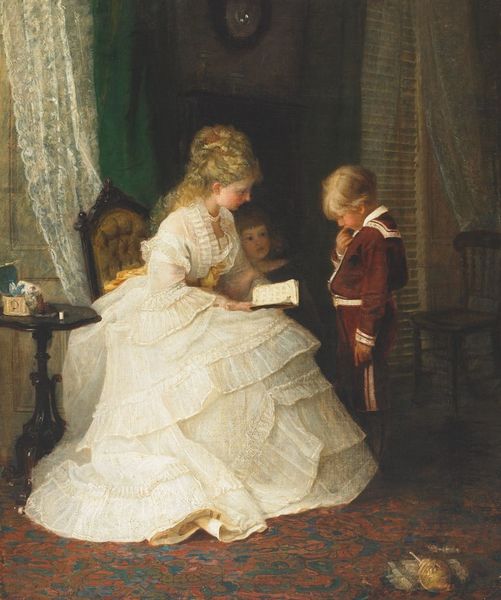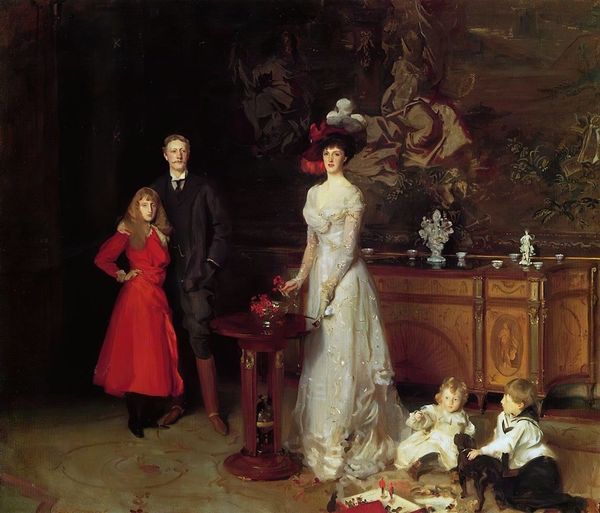
Copyright: Public domain
Editor: We're looking at James Tissot's "Too Early" from 1873, an oil painting that captures a moment at a formal social gathering. What strikes me most is the palpable tension—almost a stillness—amidst the opulent setting. What do you see in this piece? Curator: I see a pointed critique of the societal expectations imposed upon women in the 19th century. Notice how the women's elaborate dresses, while beautiful, also seem like constraints, almost imprisoning them. Consider how they are being watched, subtly, almost as if on display for prospective suitors or for social judgment. Editor: I hadn’t thought of the dresses as constraints, but I see that now! What about the title, "Too Early?" Curator: "Too Early" speaks volumes. It highlights the liminal space these women occupy. They're present, but seemingly waiting, perhaps for the 'real' event to begin, mirroring their constrained roles within the patriarchal structures of the time. They are present, but do they have agency? How much control do they have? The title emphasizes their premature arrival, highlighting their anxiety about social acceptance. Editor: That makes me consider how passive the figures seem. Is that intentional? Curator: Precisely. It emphasizes their lack of agency in defining their own experience and the role of women and the importance of being punctual in Victorian society. The painting critiques the rigid codes of conduct that dictated women's lives. We have to question who dictates what “time” it is, who holds the power to set the rhythm and dictate its value. Editor: I never would have picked up on that. Looking closer, the man standing in the doorway does seem to reinforce this idea, casting a sort of judgemental shadow. Curator: And the children observing from behind the doors…They're learning. Tissot is staging the ways in which societal norms are learned and performed, which perpetuate expectations from a young age. Editor: This painting now has a new layer of complexity for me. Thank you! Curator: Indeed! This piece encourages us to reflect on the performative aspects of social rituals and how they shape gendered identities. It also prompts us to consider historical expectations of class and gender norms which resonate even now.
Comments
No comments
Be the first to comment and join the conversation on the ultimate creative platform.
